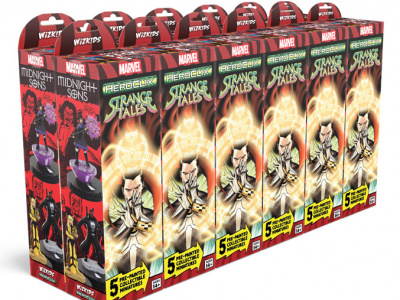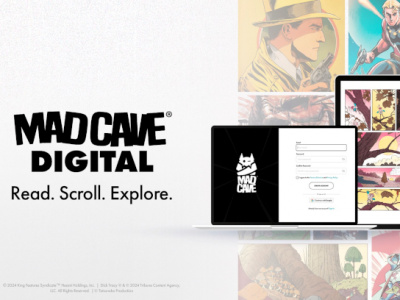
Get In The Game is a weekly column by Dan Yarrington, managing partner of Myriad Games in Manchester & Salem, New Hampshire, Treasurer of the Professional Game Store Association, and Editor-in-Chief of GameSalute.com. This week, Yarrington talks about making hobby stores less marginal.
Welcome back to Get In The Game, a column that focuses on proactive ways we can improve the games industry. This week, we discuss how stores may be marginalizing ourselves out of business.
Part 1: Margin
Put simply, margin is the difference between what we’re selling for and what we’re buying for. Margin is just a part of what yields profit. It is not in and of itself profit. So many people forget that. In the end, it’s about the net profit. Not the gross sales, not the gross margin, the profit you end up with when everything is said and done. [And margin is not markup either. Markup looks even better than margin, but in the end, you need to look at the whole picture.] There are various ways you can improve your margin, and they’re not all entirely obvious.
Usually what we focus on when we try to improve our margin is our discount from suggested retail price. With more and more products going to net pricing, that method doesn’t always work. You need to assess the true costs of a product line, including shipping, cost for space, and processing costs, to determine your real margin. You can increase the price of something (essential for carrying higher cost net priced items), find a way to get the product cheaper (like buying in bulk when that option exists), or you can find ways to change the equation entirely.
Pre-owned items are one of the best ways to improve your margin and there are tomes that could be written about that subject, another day. And here’s an old saying for you: “You don’t make money when you sell. You make money when you buy.” The price you buy for is as important as the price you’ll sell at, usually moreso. And that’s the trick of margin. You want it to be just right. You don’t want to overbuy to get better margin and get stuck with excess inventory. But you don’t want to lose sales to being out of stock either. And since the entire supply chain is playing hot potato with inventory risk, it feels safer to accept lower margin for the benefit of being able to avoid making those tough decisions. It’s easy. But easy does not always translate to success.
Margins slowly shrink as we’re willing to trade them away for lower risk. You want to take risks--measured, calculated risks that yield you higher margins and a happier bank account. Erosion of margins is insidious and persistent and without an active effort to counteract that movement, we’ll eventually reach a point where we will no longer make enough in gross margin to offset our expenses with room for healthy profit. Many stores are already there and we even see some companies holding them up as examples--pinnacles of how stores should operate. And you can see the logic there. Of course publishers want you selling truckloads of their product, spending as much time as possible promoting it, and dedicating more space than you can afford to supporting it. The trick is in the trade. What are you getting in exchange for all that time, money, and effort? Lower margin or more?
Part 2: Marginal Incentives
As an industry, we’re terrible at incentives. We don’t have a concerted strategy for handling low and high margin goods. We don’t have a system that rewards those who actively promote and sell games over others. We don’t have any regular method in place for liquidating underperforming stock in a somewhat profitable manner. We suffer from a lack of willingness to eat our mistakes and learn from them. We need incentives that will actively push sales that will provide the tools we so desperately need on the front lines to not only retain existing customers, but to grow a whole new generation of gamers.
At present, you can sell one of a product and make the same gross margin as when you sell 20 of a product. This is considered normal. This system incentivizes minimal risk, which leads to inconsistent stock levels across all tiers, which means that there’s no significant investment in providing ready inventory levels to continually build steam for successful titles and lines. As a buyer, you want to get the products that will sell, with the tools to sell them, and the lowest risk and carrying cost. You’re looking for the wrong thing. Look for lines that reward you proportionally for selling more.
As a seller of games, I want the option to really get behind games and be rewarded for my efforts. I don’t just want a higher gross sales or higher unit sales. I want opportunities that will enable me to raise my net profits, through whatever tools are available--whether by reducing costs or increasing revenues (preferably both!). By way of example: I look for publishers who provide free demo copies with purchase-- then I choose which of those titles I want to get behind and champion them. If I see a line with a comparably paltry discount level, that requires me to buy my own demo copies when I’m purchasing 2-3 cases of a title, I start looking elsewhere. If I see a line with full margin, a robust demo support program, solid packaging, and great promotional programs that drive sales to my store, I’m there!
And these incentives don’t have to be more margin necessarily. It could be early access to a new title. It could be reward packs to give away to customers who run games in your store. It could be exclusive promos only available through stores that have run a certain number of events. It could be the willingness to maintain inventory reserves and allocate them through a reprint period, rather than simply selling out and losing momentum on a line after months of out of stocks. Some of these are done inconsistently by some publishers. Some are becoming regular parts of business as usual. Some are seen as pie-in-the-sky dreaming. Most importantly, they’re all eminently possible and realistic.
Without a restructuring of the incentives system, the risk sharing and inventory management, and the way we support each other behind the scenes in the industry, we’ll remain what we are today: a marginal offshoot of the toys and games industry.
We have a tremendous opportunity to expand beyond that marginal role and redefine our place in the entertainment world. We just need to work together to turn the best ideas into realities and then apply them consistently.
What incentives do you want to see from publishers? What programs do you partake in now that you appreciate? What do you wish you could get as a benefit for supporting a line at your store? Talk Back today!
What are you waiting for? Get In The Game!
The opinions expressed in this column are solely those of the writer, and do not necessarily reflect the views of the editorial staff of ICv2.com.







